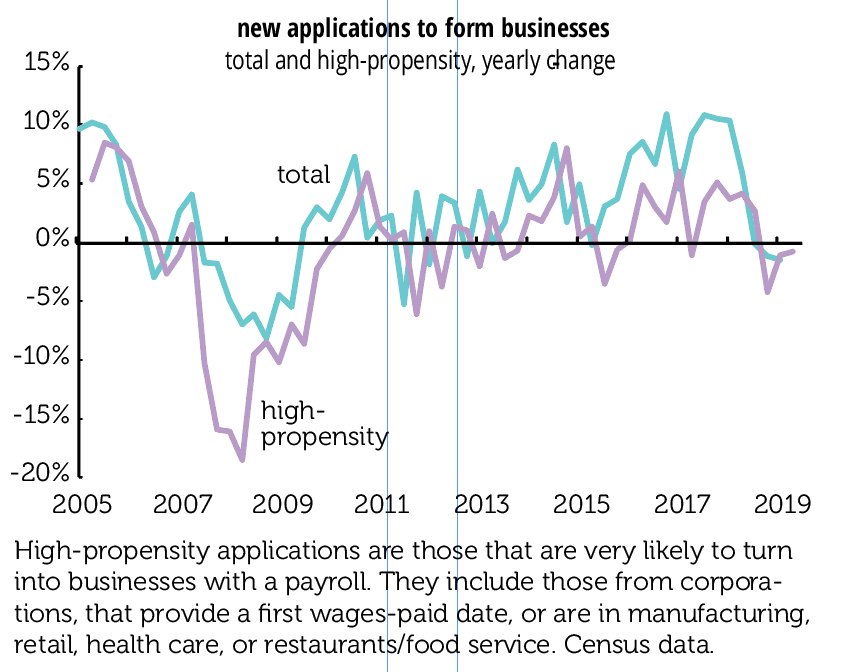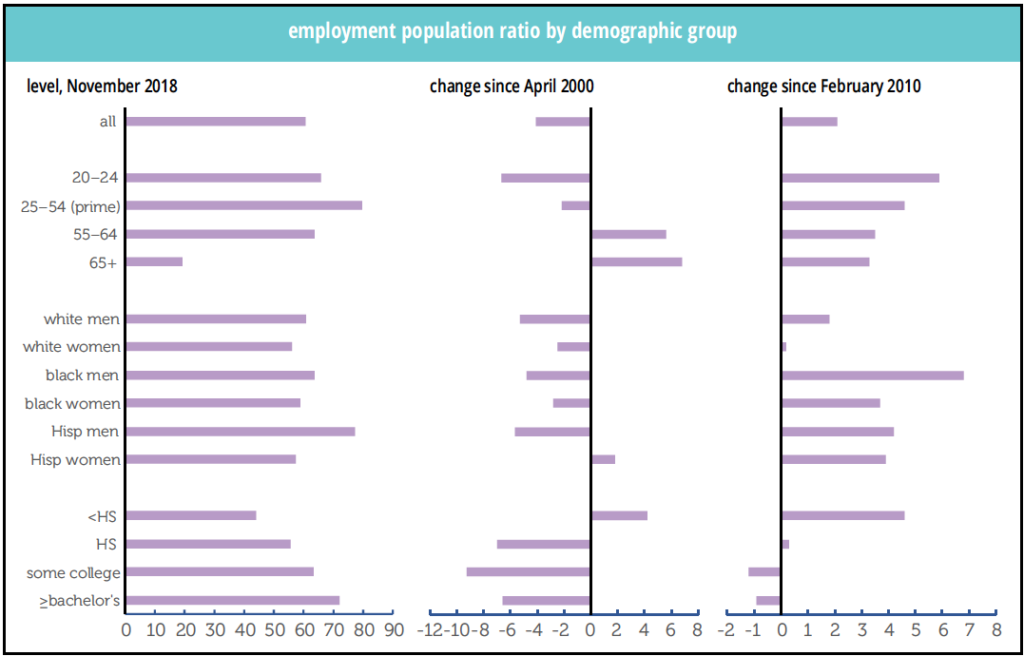Something new here too. Since 2006 wage gains among production workers are stronger than for all workers in all but four sectors, which suggests, of course, that managers are falling behind.
The Bureau of Labor Statistics has wage data for manufacturing production workers running back to 1939. In 1939, average hourly earnings for nondurable manufacturing were just 52% of those for durable manufacturing, 34 vs. 65 cents, but rose almost straight up in the 1940s to 80% and continued to drift up to their current 89%.
In the Trade, Transportation and Utilities sector, however, retail wages have lost ground, falling from 84% of TTU wages, to 80% currently, while wages for transportation & warehousing have fallen from 127% to 110%. Wages for wholesale trade have risen from 109% of TTU wages to 126%, while utility workers have seen their wages climb from 132% to 184%.
Back in 1964, when records were established for the goods producing and service providing sectors, wages were even, but by the 1980s wages for services had slipped to 80% of goods. They began a rocky climb back up and have levelled out at about 94% currently. Since 1964, construction and manufacturing wages have risen by similar percentages, but logging & mining wages have gained an additional fifteen percentage points.
We’re looking back to 2006 now because that is as far back as the all-worker series goes. Since then, wages in logging and mining have made the strongest gains, up 49%, to $28.96, followed by leisure & hospitality, up 47% to $14.11. Production workers in finance and in professional & business services made similar percentage gains, to about $27.00, as did construction work, to about $28.00. Since 2006, wages in services are up 40% and in goods up 36%.
Weakest gains for production workers are in manufacturing, transportation & warehousing, and retail trade, all up around 30% to $21.77, $22.07, and $16.15 for retail.
Since 2006, however, production workers have seen greater wage gains than all workers in all but four sectors, so managers are dragging that broad tranche down. In manufacturing production workers lagged all workers by 1 percentage point, in durable manufacturing by 3pps, in utilities by 5pps, and in information by 11pps. In leisure & hospitality, production workers were 6pps ahead; in retail trade, 5pps; and in logging & mining, construction, and education & health, all ahead by 4pps.
Over the last year, production workers wages are up over 5% in logging & mining, up 4% or more in information, retail trade, leisure & hospitality, and construction. In only other services, 1.9%, and finance, 1.6%, are they up less than 2 percent.
Over the last year wages for all workers in information, a struggling sector by other measures, are up 6%, up 4% or more in construction, retail trade, leisure & hospitality, and finance, followed by a string of 2-3% gains, with non-durable manufacturing, and transportation & warehousing reporting the weakness growth at 1%.
The wage picture is certainly complicated, with some of the largest percent gains occurring side by side between the highest and the lowest hourly wages, and quite a few “not as we expected” trends. By a number of metrics the different sectors are going in different directions, which further confuses an already cloudy picture.







Little Wonder the BQE is about to Fall Over
For another striking measure of shortfalls in public and private investment, check out the graph below. These are real dollar amounts, not percentages of GDP. In real dollar terms, net fixed investment of all kinds is 20% below where in was in 2005. Net private nonresidential investment is just 12% above where it was in 2007. Net residential investment is 63% below where it was at the peak of the housing bubble, 2006. And net public investment is 39% below. Again, real dollars. These are paltry numbers considering that real GDP is up 36% since the pre-recession peak in 2007.
So net private investment is limp, and net public investment is struggling to keep one nostril above water. This has a lot to do why it feels like things are falling apart, and not just in rural America. An important section of the Brooklyn–Queens Expressway is about to fall down, and there are many other similar cases across the country. Visitors from China routinely express shock about the state of the infrastructure in a country that is still far richer than theirs. And crises like the coronavirus really bring home the effects of inadequate public and private investment. Tending to long-lasting things has gotten highly unfashionable, but that approach has some pitfalls.